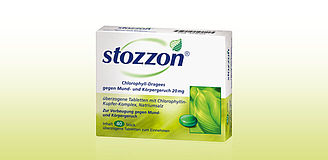
Most of the time, bad breath occurs in the oral cavity. There, the microorganisms that have settled in the oral cavity are responsible for the development of the bad breath. All healthy people have a multitude of microorganisms living in the mouth, but there’s no need to worry as it is not necessarily these microorganisms that are causing your bad breath. It particularly occurs if certain types of these organisms gain the upper hand and if the balance of the oral cavity biotope is thrown out of whack.
The oral flora of a person consists of countless, incredibly different microorganisms, also known as protozoa. As the teeth, tongue and mucous membrane of the oral cavity each have very different surface qualities, they also provide different microorganisms different living environments correspondingly. Researchers have been able to identify almost 600 different types of bacteria, viruses, fungi and unicellular organisms.
Although at first that may sound alarming and unhealthy, it is actually completely normal. We actually rather need these little helpers as they perform important tasks, such as warding off pathogens and supporting the digestive process, as they start breaking down proteins in the mouth.
Oral cavity – A perfect but fragile ecological balance
All types of microorganisms are initially anxious to multiply. However, the uninhibited reproduction is stopped, as they compete amongst each other for nutrients. Most of these small microbes prefer to live off residual protein-rich foods, milk, quark, yoghurt, cheese, eggs or meat. The product of their metabolic process is then deposited as plaque on the teeth.

With healthy people, who eat a balanced diet and clean their teeth thoroughly, predominantly aerobic bacteria are found in the mouth area. They prevent the uninhibited reproduction of their anaerobic colleagues, also known as putrefactive bacteria.
Preferred living environment of microorganisms: The tongue
According to experts, 50 percent of all cases of bad breath are caused by a coating on the tongue. There are two causes for this accumulation of undesirable germs: First, the mucous membrane of the tongue is naturally very thick. And second, there are countless papillae on the tongue with depressions in the gaps in between, which provide an optimal living environment for anaerobic bacteria. Therefore, regular, mechanical cleaning of the tongue when suffering from bad breath is always an effective way of treating the problem.
Biofilm: The bacteria’s strategy against tooth brushing
Bacteria in the mouth are not lone fighters, instead they form bonds with each other to perform coordinated tasks. If this is not regularly countered through oral hygiene measures, it can lead to a carpet of bacteria forming, a so-called biofilm.
This coating made up of connected bacteria can sometimes be so cleverly coordinated that it can no longer be removed by normal mechanical cleaning measures, like tooth brushing. In extreme cases, even medical intervention with antibiotics is no longer successful against such biofilms. In such cases it is important to seek medical help from a dentist in a timely manner.
Dentures: Fit and hygiene are important
According to a recent survey, 16 million Germans wear dentures. Any of these people know that: Even the best dentures or partial dentures need to be looked after. You can only successfully prevent bacteria from settling on the dentures with regular cleaning. At the same, the fit of the dentures must be ensured. Ill-fitting dentures are usually a potential cause of bad breath. Food residue that gets trapped under such dentures is the perfect breeding ground for bacteria. A further source of danger is the pressure sores cause by the ill-fitting dentures. They also form a convenient breeding ground for bacteria to settle in.
Read more about dental diseases and the role that they play with regards to the development of bad breath.
In addition, you can keep your oral flora intact with targeted dental hygiene. You can find useful tips on our advice page “Optimal dental hygiene, how to do it properly”.








